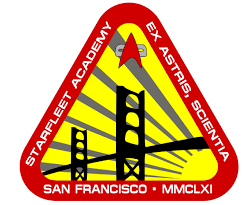Episode summary at Memory Alpha.
Themes and Discussion
The Ligonians are also isolationist and distrustful of outsiders. They use their own transporters to beam aboard the Enterprise. This won’t be the first time the crew encounters an isolationist or xenophobic species. Some parts of our own political spectrum lean more towards isolationism, and I think Star Trek knows that and wants us to have a conversation about that over the course of the series. The Prime Directive has some part to play in that conversation; I’ll address some of that here, and some of it in a later, longer post.
The Ligonians value honor and respect above all else and have a rigidly ritualistic culture. They are a male-dominated culture, but it is the women who hold the land and money, so there is a small reversal there.
I can’t talk about the episode without talking about race a bit. The culture presented here is referred to as being influenced by ancient Chinese culture, but it seems clear that it also draws influence from African cultures, too. Not to mention the fact that this species seems to be made up only of people of color. It’s more than a little bothersome that they are dressed in a somewhat provincial way and portrayed as backwards. That looks racist to me. However, a tiny bit of that is mitigated by the fact that they outsmart the Enterprise crew initially by taking Tasha, but that’s not enough to offset the negative stuff.
Here, the crew is also faced with a common Trek theme: weighing the lives of the many versus the lives of the few or the one. Just based on my past viewings of the episodes, I’d have to say that it is this scenario where the crew pushes against the Prime Directive the most often. The crew values the lives of individuals, but they are also often trying to help a group of people.
A lot of this episode also centers around cultural misunderstanding, and how the Prime Directive comes into play when this happens. For those who don’t know, the Prime Directive is Starfleet’s policy of non-interference. Basically, they are not allowed to take sides in conflicts or politics; they can’t give their technology to a species that isn’t technologically on the same level; and they are to respect the cultures and laws of other species. Here, Picard relies heavily on his crew for background information about what the correct response to the Ligonians is, based on the research they have done on Ligonian culture. He wishes to respects their customs and laws, but he is also faced with the kidnapping and possible death of one of his officers. This leads to an innovative solution (giving Yar’s opponent the antidote to the poison after allowing the ritual fight to play out as Ligonian custom demands) that perhaps satisfies both the Prime Directive and Ligonian custom.
In the last rewatch, I looked at the issue of relationships in Starfleet and that is brought up again here. She is attracted to the Ligonian who captures her (she admits this), but she says that a relationship with him is impossible because she is a career Starfleet officer. Later, after her opponent is brought back to life and revealed to the Ligonians, Yar is asked if she wants the Ligonions who took her. She turns down the offer, remarking that there would be complications. What sort of complications, I wonder? Long-distance relationship complications? Keeping a man on the ship with her complications? It is never specified, but I suspect it has to do with this unspoken code of singleness that Starfleet seems to have.
Technology/interfaces
Most of the episode is focused on people and not technology so much. The Ligonians are pretty interested in the holodeck and its use for tactical training, so they are given a demonstration by Yar. When Yar creates a virtual opponent, one of the Ligonians exclaims “You can create a person without a soul!” Yar explains that the holographic fighter is merely an embodiment of a computer program and not a real person. I don’t know about anyone else, but this was one of the moments where I cringed. Did the Ligonians really need to be told what a hologram is? They are advanced enough for the Federation to make contact with them, and they have a transporter, so a hologram shouldn’t be beyond their comprehension. However, the episode seems to want to portray the Ligonians as antiquated–their mode of dress, their heavy reliance on rituals, their belief in spirituality (the series is told from a humanist point of view and is almost always suspicious of religion of any variety, portraying it as backwards) are all used as evidence for this.
Information seeking behavior
Though Riker, Troi, and Data conduct much background research on the culture of the Ligonians, it isn’t clear how they search for the information or where–presumably in the ship’s computer. I’m actually curious if they split up the research areas and searched individually, or if they all collaborated in the search process (much like Riker does with Data in “The Naked Now”). Sometimes having more than one point of view about how to conduct a search can take the search in many fruitful directions. My former boss and I would often bounce ideas off each other when we received a research request, and I always found that helpful; she inevitably thought about an issue in a different way than I did, so we found a good assortment of sources between the two of us. In other episodes of TNG, we see the crew using this kind of collaborative approach.
In the later portion of the episode, we see Picard telling Data and Geordi to gather information about Ligonian armaments: “especially important is an analysis of combat capabilities.” Geordi asks for more information, and Picard tells him to look at the cutting edges of the weapons wherever applicable and to analyse durability, composition, and weaknesses in material. Data asks if they should look with any particular point of view. Yar’s use of the weapons in combat is the perspective that Picard has them consider. Picard should have been giving Data the search instructions in the last episode. He clearly has a specific information need and clearly formulated query.
Side note: I assume that a large amount of information gathering is happening by using the ship’s computer. How often are the ship’s databanks updated? Is there something like Windows Updates in the future that pushes information to the ships of the fleet over subspace? Do they get updates from the computers of starbases or other ships? How does the transfer and updating of information happen? It would be useful to know how current the data is on the ship at any given time.
Use of weapons/force by Starfleet/Federation
A lot of force is used in this episode, though only some of it is used by the Enterprise. In the initial encounter with the Ligonians, they are to hand over the vaccine. As one of the Ligonians brings it to Picard, Yar insists on inspecting it, but the Ligonian tries to move around her. She grabs his arm and flips him to the ground. So, the Enterprise is the initial aggressor in the encounter.
After the Ligonians kidnap Yar, Picard orders the firing of photon torpedoes to detonate above the surface as a display of firepower to try to convince the Ligonians to give her back. This doesn’t work.
The Ligonians give the Enterprise a way to get both the vaccine and Yar–a fight between Yar and Lutan’s first wife. The fight is to be to the death. Yar fights and wounds her opponent with the weapon coated in poision, but she doesn’t allow the woman to die. Instead, they are beamed to the Enterprise so she can be treated.
Assorted musings
I had forgotten how much advising Troi does in these first few episodes. I don’t think she’s the voice that a decision hinges on, but she does advise Picard on policy issues, not just what others are feeling. While she was pretty emotional in the first episode, she’s been a pretty good advisor in episodes 3 and 4. I have the sense that her role, going forward, is more as a lie detector than an advisor, but I’ll be interested to see if I’m proven wrong about that.
The colors of the ship’s decor are so 1990s. The tan and mauve and dusty blue. There are office chairs in my workplace from the same time period in that color scheme. In many ways, the show transcends its time period. In others, it is very dated. I don’t think there is a way to avoid this; it is extremely hard to get outside one’s own historical moment, especially when you are projecting into the future.
And the shiny clothes. Shiny == the future. Or, if you are Wesley, frumpy and uncomfortable sweaters == the future.
We get the first instance of Data and Geordi exchanging some humor. It is the beginning of a beautiful friendship.
So, just based on the costumes that the Ligonians are wearing here, I have to wonder if a more ridiculous costume is supposed to be equivalent with a less advanced species/race. When we meet the Ferengi in the next episode, some of this is happening, but as I am thinking about the species I can remember, the ones with the worst costumes do stick out as being the most backwards (technologically and/or culturally). I’m curious to see if this bears out over the series. Clothing is used as a signifier in our culture, so it is plausible–and perhaps inevitable–that it becomes one in this future world.






